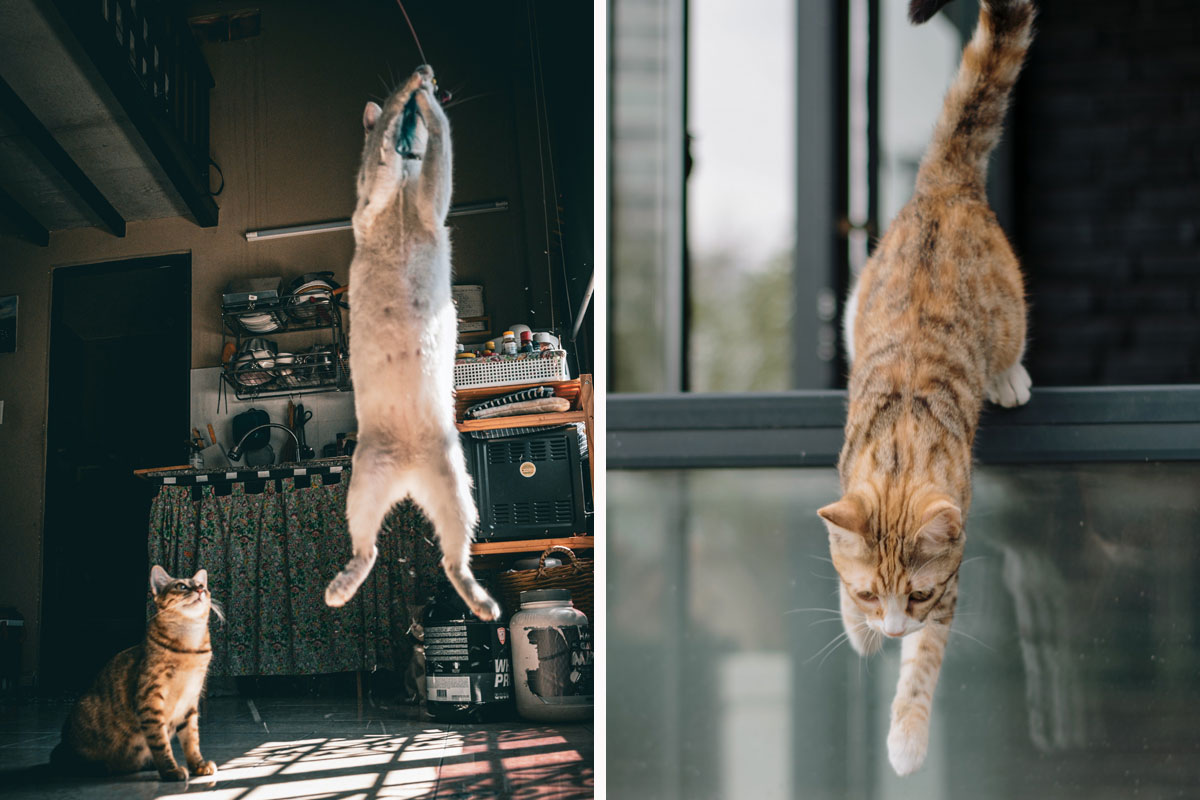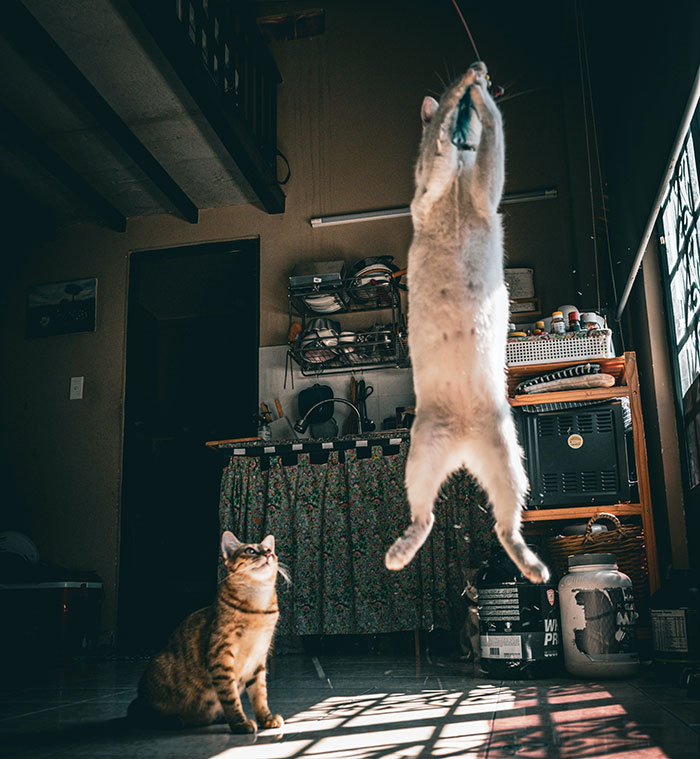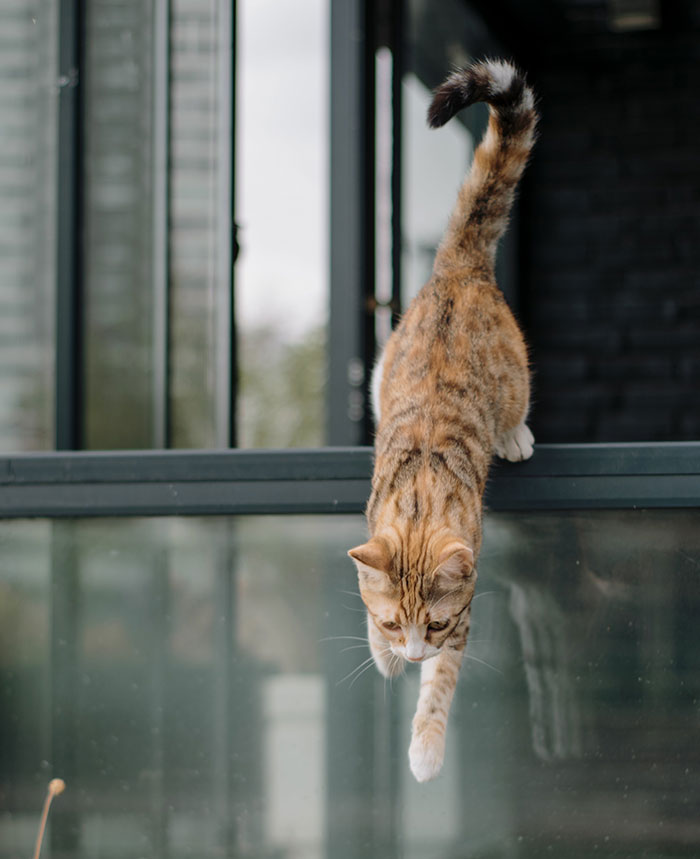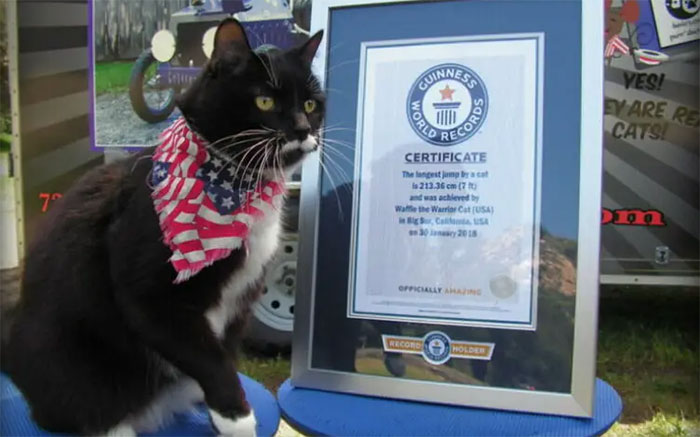Have you ever wondered just how high your kitty can jump? All cat owners can witness seeing them effortlessly leap to the top of the refrigerator like it’s no big deal.
The information provided herein is for informational purposes only. Please refer to our disclaimer for more details..
Do cats love to jump?
Yes, most cats love to jump, and they are pretty incredible at it. Cats are known to be agile and athletic animals that have a natural inclination to climb and jump.
- Healthy adult cats can jump 5-6 times their own height, up to 180cm.
- Cats can horizontally jump as far as they can vertically.
- The righting reflex helps cats land on their feet when they fall.
- World record for highest cat jump is held by Waffle, at 213.36cm.
- Cats' powerful muscles and flexible spine aid their jumping ability.
- Breed, age, and motivation affect how high and far cats can jump.
Their jumping prowess is linked to their instinct as natural hunters, and while our domestic cats might not need to hunt, they still show this instinctual behavior.
In addition to instinct, most cats simply jump because it is fun. They are curious animals, and their jumping skills allow them to explore their surroundings.
Every cat owner has observed their cat zoomies, where there is darting around the house, leaping, and sometimes chasing an invisible prey. These are simply playful episodes when cats release energy.
How high can cats jump?
Image credit: Duy Nod
When discussing vertical jumps, a healthy adult cat can jump five to six times their own height. This height is measured from the ground to your cat’s shoulders. The average height of an adult cat is 30cm. This means most house cats can jump vertically as high as 150cm or up to 180cm. Surprisingly, some cats can jump up to 240cm.
The height a cat can jump also depends on the cat’s breed, age, and activity level. Some cat breeds, such as the Savannah, Siamese, and Bengal breeds, are excellent jumpers. However, breeds with short legs won’t be able to jump as high.
How far can cats jump?
Cats are equally as talented when it comes to horizontal jumps. Horizontally, most cats quickly jump as far as they can vertically. On average, cats can jump 5 times their body length.
How do cats jump so high?
The cat’s jumping ability combines anatomy, physiology, and physics. Let’s look at each aspect.
The anatomy and physiology
Image credit: Berna Tosun
Cats have powerful limb muscles with an unusually high proportion of high-twitch muscle fibers. These fibers are needed for short bursts of energy used in sprinting and jumping. These powerful fibers give them a greater explosive power, helping cats jump well.
In addition to this, the flexibility of their spine, knee joints, and ankle joints allows a wide range of motion when they jump. The cat’s tendons also contribute to their ability to jump. Their Achilles tendon, in particular, is thicker than most animals, giving them extra flexibility in their back legs.
The physics
Cats have powerful and flexible muscles in their hindlimbs that let them quickly launch themselves off the ground. Before a jump, a cat crouches. Its back legs are angled to help it push off the ground and initiate an upward force against gravity.
Cats’ streamlined body shape also helps them reduce air resistance and allows them to jump high in the air.
How do cats always land on their feet?
Cats have an innate ability to make sure they land on their feet, and this is known as the righting reflex.
This reflex is first seen in kittens as young as 3 weeks old and develops fully at about 6-9 weeks of age. The righting reflex is an incredible adaptation that protects cats falling from different heights.
When a cat falls, its vestibular apparatus helps them determine which way is up. By doing this, they can rotate their heads and bodies to reposition themselves mid-air with the help of their incredibly flexible spines. When landing, the cat arches its back to ensure its hind legs are under its body and its front legs are close to its head for protection. Simultaneously, cats use their tail to make minor adjustments to their orientation.
Due to this righting reflex, cats almost always land without serious injuries. However, the height is too short, and the cat does not have enough time to orient itself. The cat may not land on its feet.
Therefore, cats are more likely to survive a fall and land correctly on their feet if the distance is long, compared to short distances.
World record for the highest cat jump
Image credit: guinnessworldrecords.com
The Guinness World Record for the highest jump by a cat is held by Waffle, the Warrior cat. In Big Sur, California, on January 30, 2018, this cat had the highest jump ever recorded – a jump of 213.36cm. At that time, the cat was 10 years old.
Note that the world record for the longest jump by a cat may be either vertical or horizontal.
Factors influencing how far cats can jump
While cats are exceptional jumpers, many factors can influence the distance a cat can jump. These include the breed, age, physical condition, motivation, and training level. Let’s look at each of these.
Breed
Breeds like the Abyssinians or Bengals are known for their agility and athleticism and are more likely to jump higher than others. On the other hand, less athletic breeds like the Maine Coon can’t jump as high.
Age
Younger cats are usually better at jumping and climbing than older cats. They are traditionally more agile and energetic and often jump to high heights. On the other hand, older cats are less energetic and may suffer from health issues like arthritis that prevent them from jumping as high.
Physical condition
Any underlying health condition can prevent a cat from jumping well.
Motivation
Cats can jump very high with the proper motivation. They can often jump higher when motivated by play, hunting, or the desire to reach a specific location. Also, when they are scared or excited, the increased adrenaline levels can give them an extra boost and affect how high they can jump.
How to manage your cat’s jumping behavior
- Install cat furniture: Provide tall scratching posts or cat trees designated for jumping and perching.
- Use interactive toys to redirect the behavior: Interactive toys like feather wands or laser pointers can help redirect their energy positively toward play.
- Use double-sided tape: Apply double-sided tape on surfaces where you don’t want your cat to jump. Cats don’t like how it feels on their claws and will avoid such areas.
Frequently asked questions
How high can the average cat jump?
The average cat can typically jump about 5 to 6 times their length, which is typically around 6 to 7 feet in height. However, some cats may be able to jump even higher with training and good health.
Is it okay for cats to jump from high places?
Cats are natural climbers and jumpers, and they are generally built to handle jumping from high places. However, it is vital to ensure that the area where the cat jumps is safe and free from hazards that could cause injury.







11
0